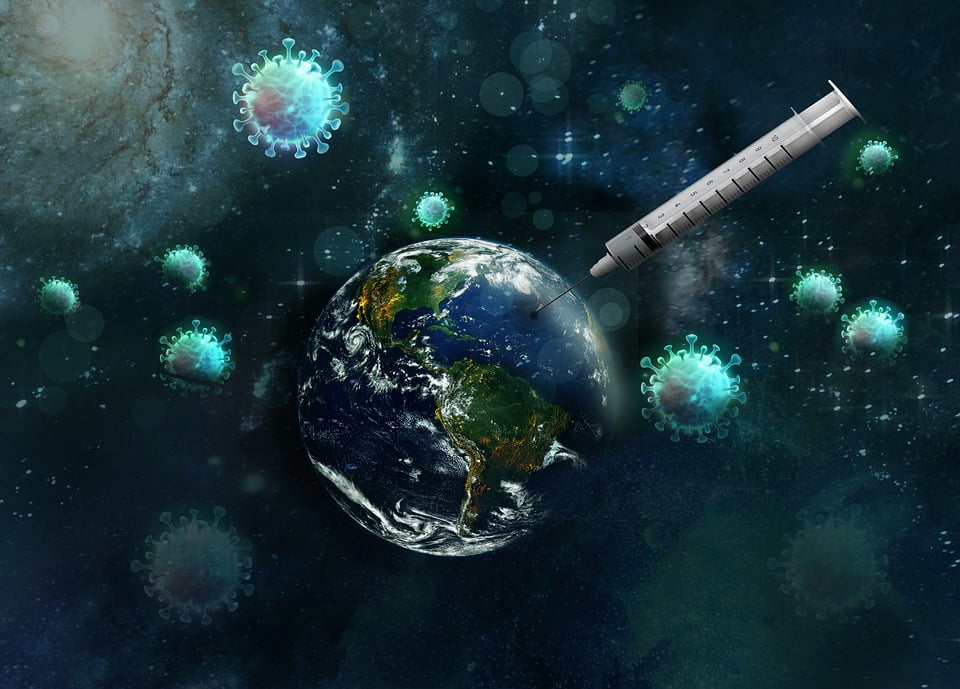There is an opinion that if you become infected with a coronavirus infection from someone who is mildly ill, then you will easily get over it yourself. We decided to check whether this pattern is supported by scientific data.
The idea of a connection between how seriously ill the carrier of the infection was and what the course of the infected person would be has already led to casualties. According to Pavel Branda, a Muscovite who believed in her, went to visit her mildly ill friends with her children, hoping to gain immunity. The question whether there is such a pattern was also given Valery Vechorko, chief physician of the capital's City Clinical Hospital No. 15.
It is immediately worth noting that in the story described above, the Muscovite did not manage to obtain immunity. A mother and two children became infected with coronavirus, as a result, the woman died, and the children suffered a serious illness. That is, in practice, the idea did not work at least once.
It can be assumed that this idea is based on principles that arose at the very dawn of vaccination. In particular, the method of variolation for smallpox: a person infected with a weakened virus, as a rule, suffered the disease easily and was subsequently resistant to severe forms. According to the same principle acted the first vaccines against measles, mumps, rubella, chickenpox and shingles. At the same time, live vaccines with a weakened virus had a fairly high percentage of side effects. Therefore, many of them were replaced by vaccines developed using other technologies - for example, by killing the virus. Today it is widely used only one live vaccination is the BCG tuberculosis vaccine.
The course of coronavirus is usually divided into two forms: asymptomatic and symptomatic, which, in turn, can be mild, moderate and severe. It is worth immediately noting that any form can be contagious - even a person who has no symptoms and does not feel sick can release a virus that is dangerous to others. However, evidence varies about how contagious asymptomatic carriers are. By words Maria Van Kerkhove, WHO's technical lead for the COVID-19 response, said transmission of the virus was "unlikely" and a model of the virus spreading to asymptomatic people, according to a model of the virus spread by researchers at the US Centers for Disease Control and Prevention. have to 59% of all virus transmissions. At the same time, 24% were completely asymptomatic carriers, and 35% showed symptoms of infection after contact. That is, a person with a positive test, but without symptoms of the disease, cannot be considered safe for others. The model did not analyze how severely ill those who caught the virus from an asymptomatic carrier got sick.
Doctors agree that the severity of the disease is not determined by how the person who infected it suffered. For example, immunologist Nikolai Kryuchkov speaks, that “it’s not just about immunity, but also about the viral load that comes from the source of infection. It is determined by the intensity of the virus excretion from the infected person, the time and proximity of contact with him. Depending on this, a person will receive a different number of viral particles that reach him. Then the ball is on the side of the contacting organism.” The explanation of why doctors, having become infected at work, agrees with the opinion of Nikolai Kryuchkov. are sick more severe, because they received a large viral load. Thus, the longer the sick person was close to the carrier, the more intense this communication was (when talking, more viral particles are released than when breathing), the smaller the distance between people, the more likely it was heavier the course of the disease awaits him.
Being indoors compared to being outdoors is on average 18.7 times increases risk of getting sick. About a similar pattern speaks and infectious disease specialist Evgeny Timakov: “It [the severity of the disease] depends on the viral load, that is, on the amount of virus that has entered the body. If a person is in contact for a long time with a person who suffers even a mild form of it, he can become seriously ill. A fleeting viral load as we pass by is one thing. But if we openly come into contact with and inhale this virus, it is enough to kill us. There is a concept: a lethal dose of a virus. Unfortunately, doctors working in red zones receive this dose. This is a very good lottery: 80% will get sick easily, 20% will have severe outcomes. Accordingly, every fifth person will have a severe outcome, and one of them will die.” Valery Vechorko, chief physician of the Filatov hospital, also denied the presence of a pattern between the severity of the disease in the person from whom the patient became infected and his own clinical picture: “No one can give such guarantees. How one person is sick does not affect the severity of another’s illness.”
In addition, when calculating the severity of the disease, the characteristics of the organism should be taken into account. There is evidence showing that in patients with diabetes mellitus risk COVID-19 infection is 10.3 times higher, vitamin B6 deficiency associated with more severe disease, similar data There is and about vitamin D. Identified three genes (MART, PIGN and CCR5), the presence of which increases the risk of becoming infected, increases the severity of the disease and increases the risk of experiencing health consequences after recovery. Chronic diseases of various organ systems, arterial hypertension and excess weight also play a role. In some countries, ministries of health even are developing checklists for predicting more severe disease based on these factors.
Thus, there are a number of factors that can be used to predict the severity of the disease. However, this does not include whether the patient who infected another person was asymptomatic or severely ill.

Not true
Read on the topic:
If you find a spelling or grammatical error, please let us know by highlighting the error text and clicking Ctrl+Enter.






